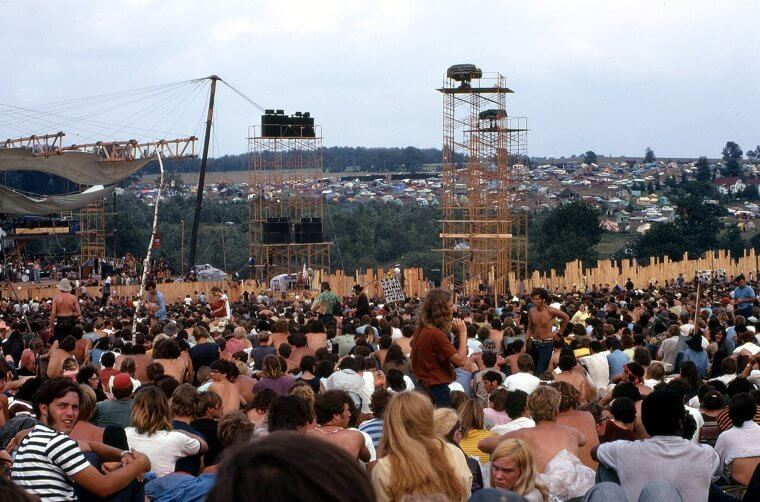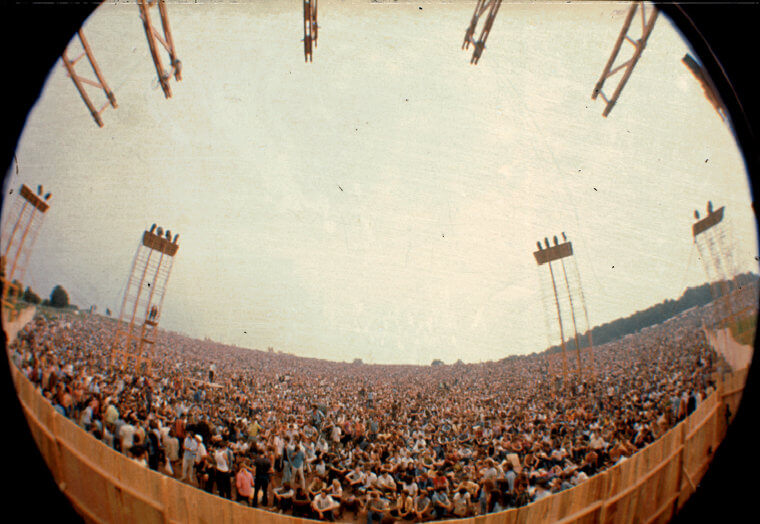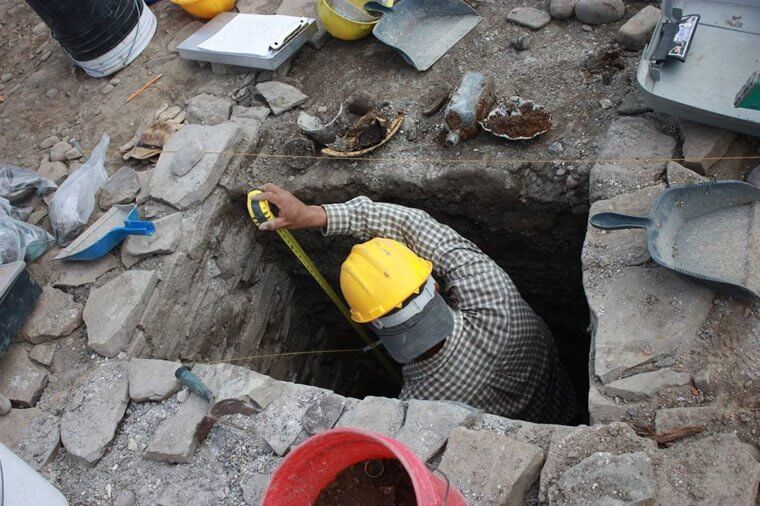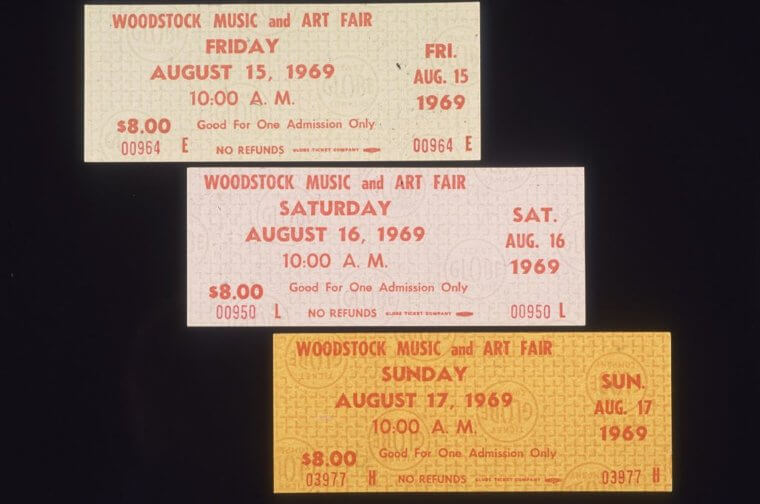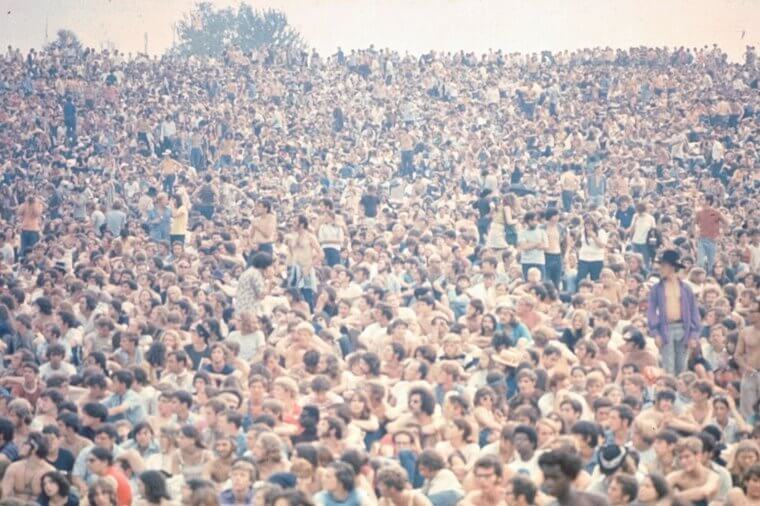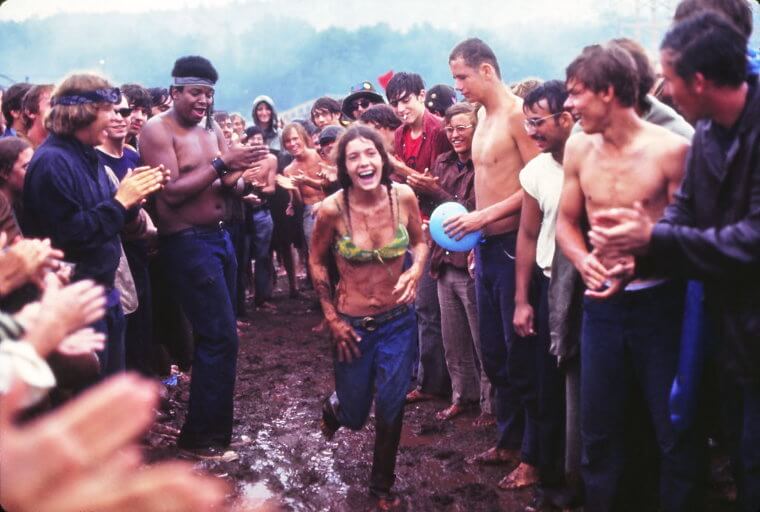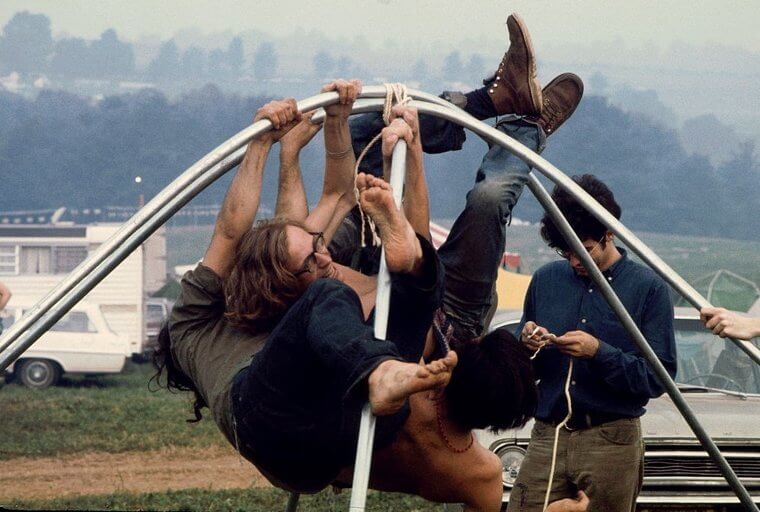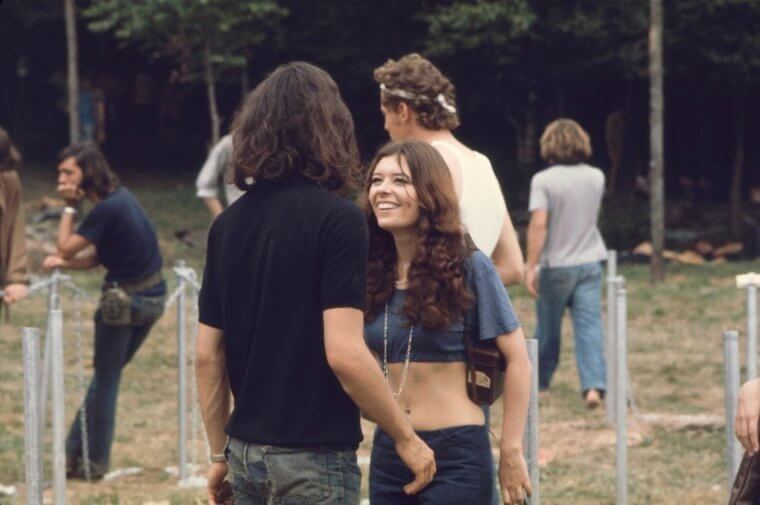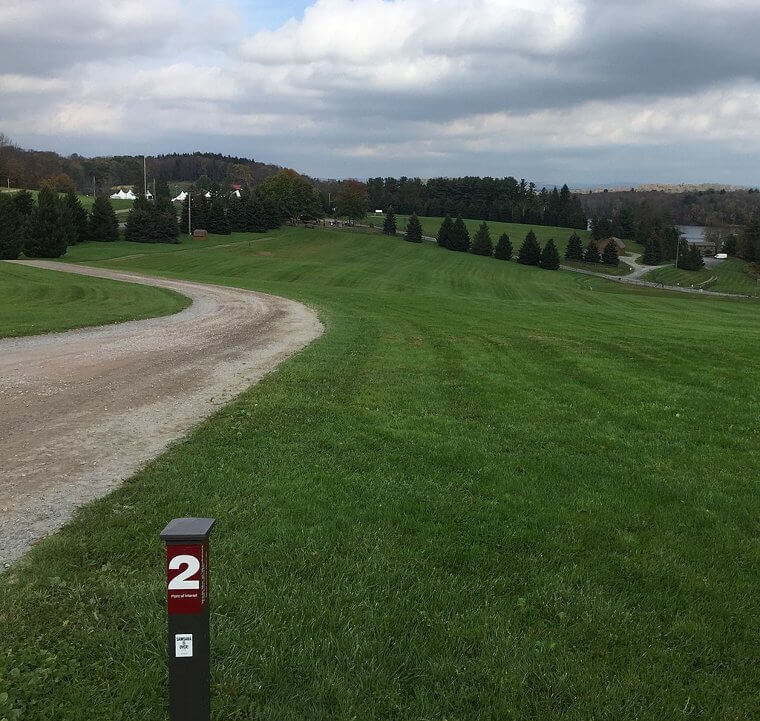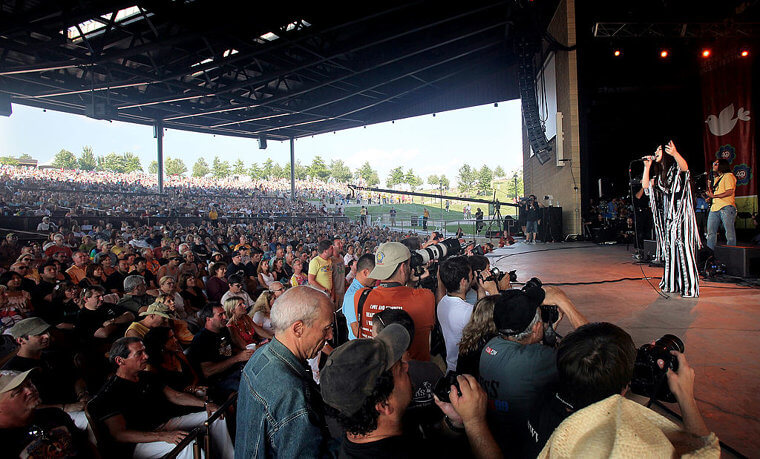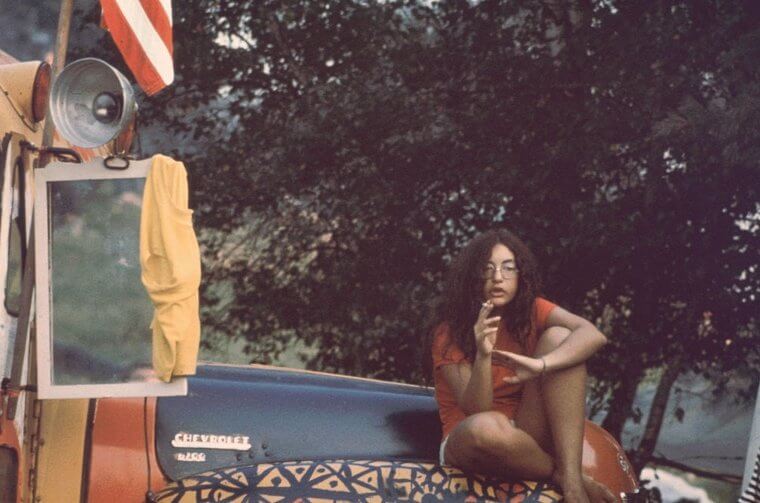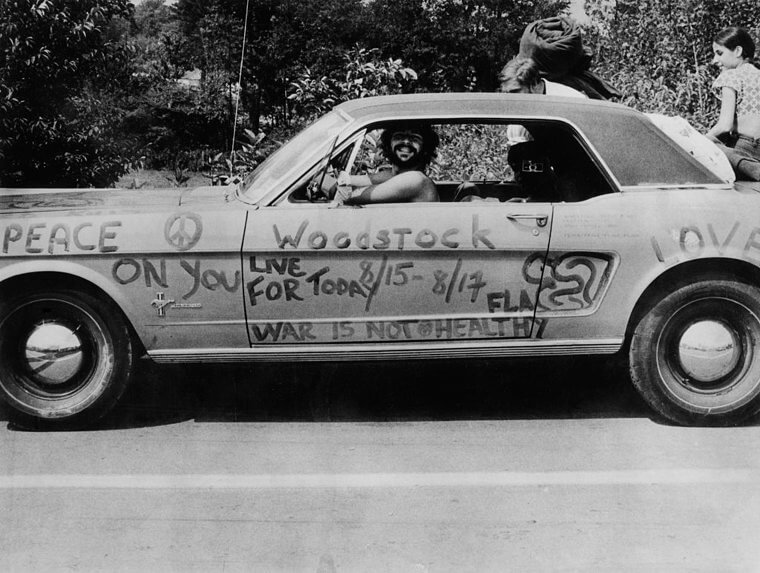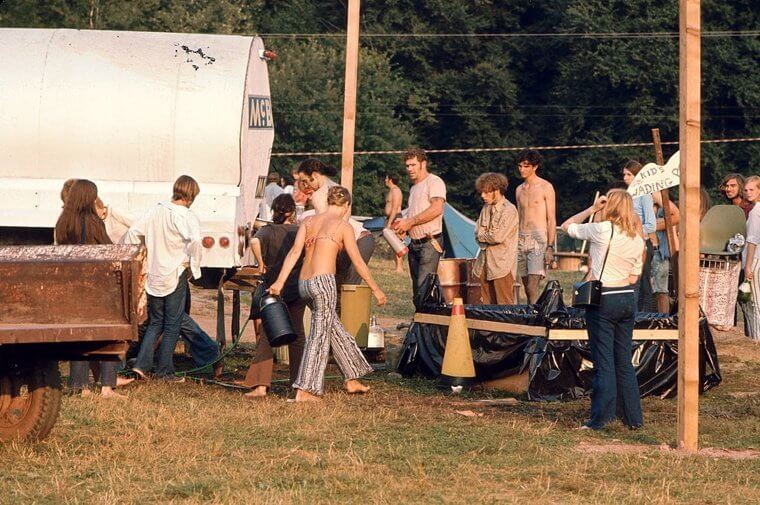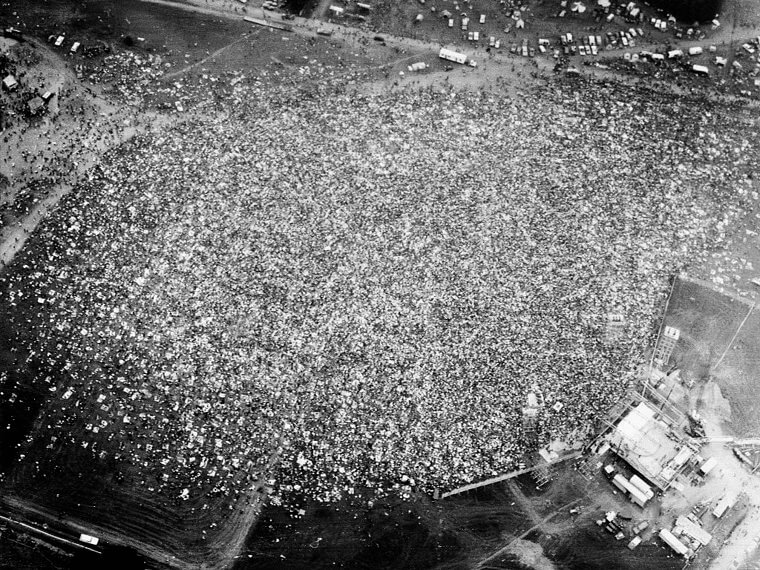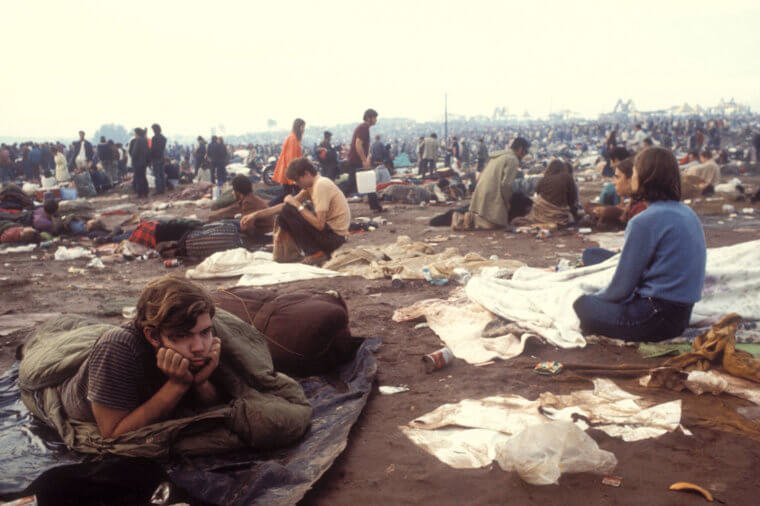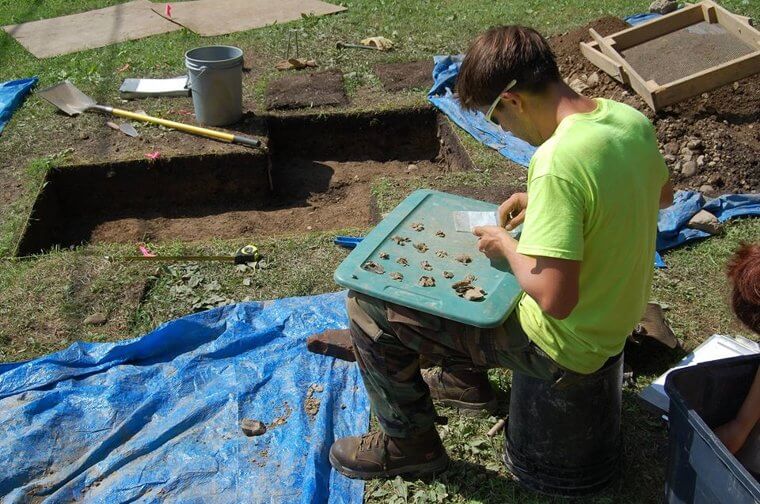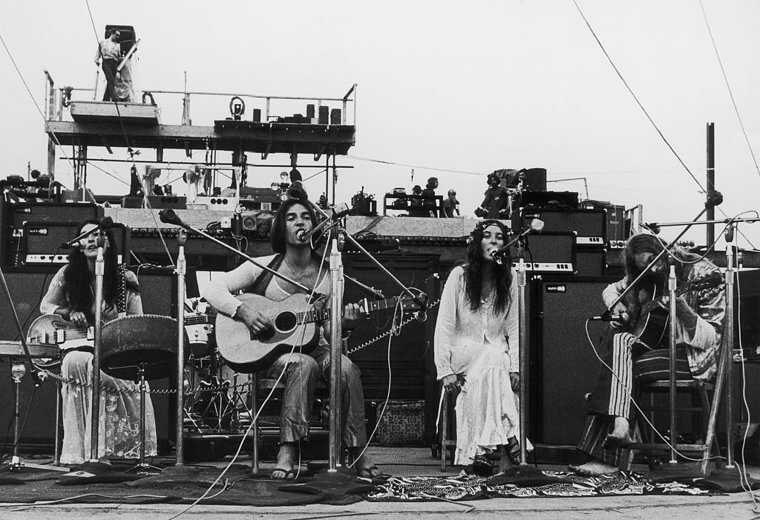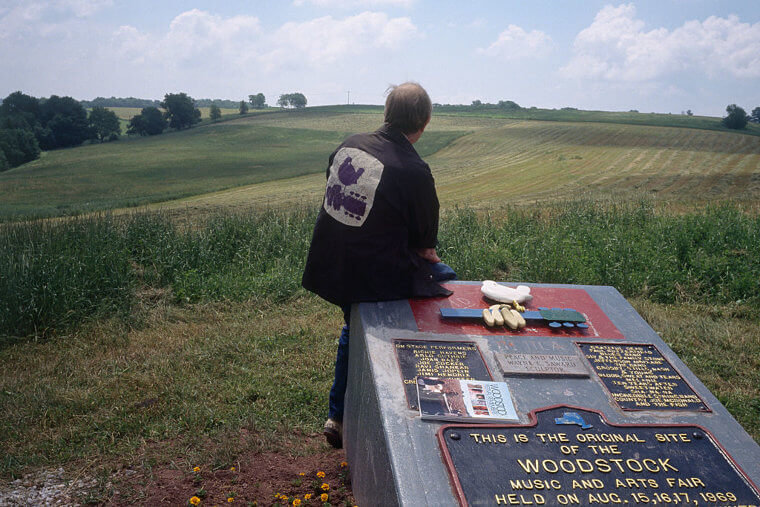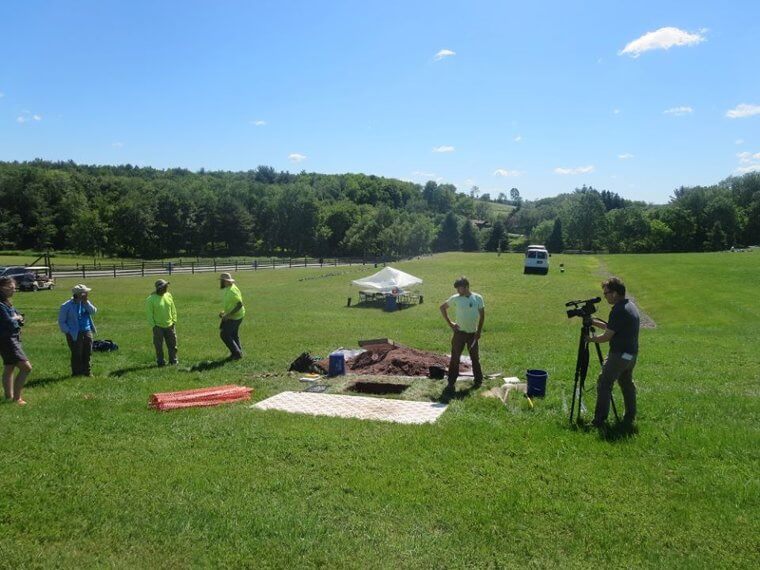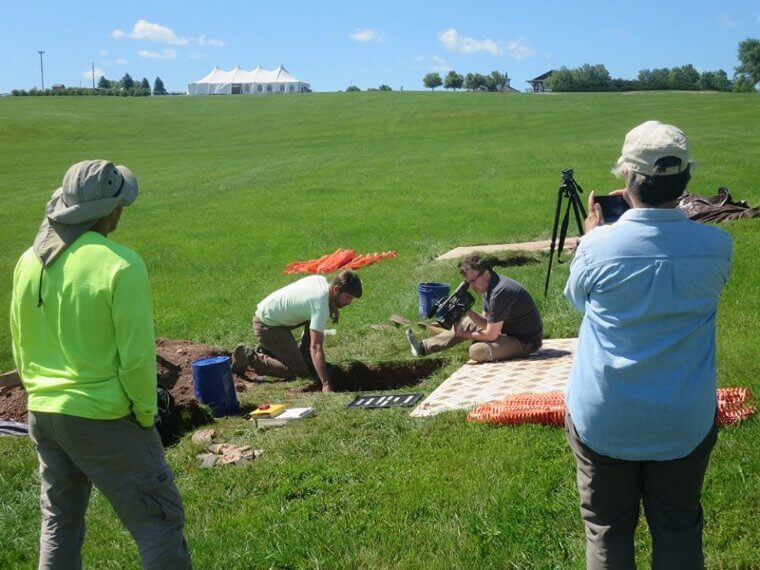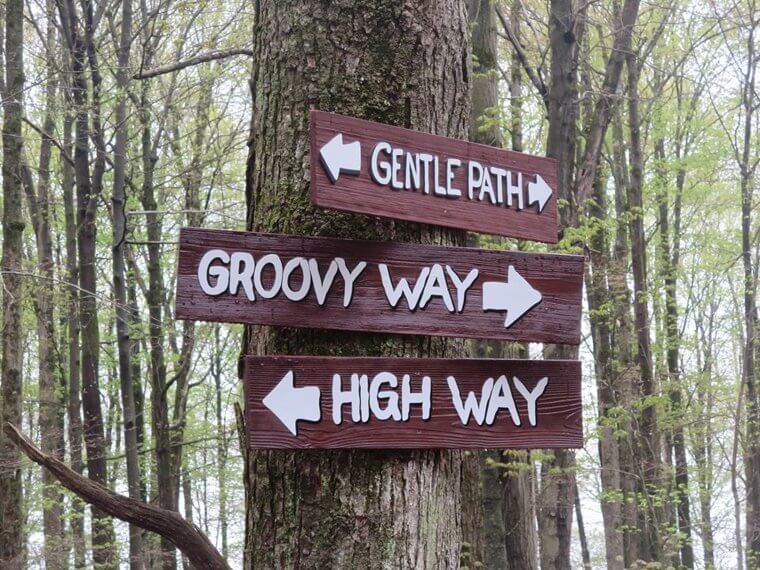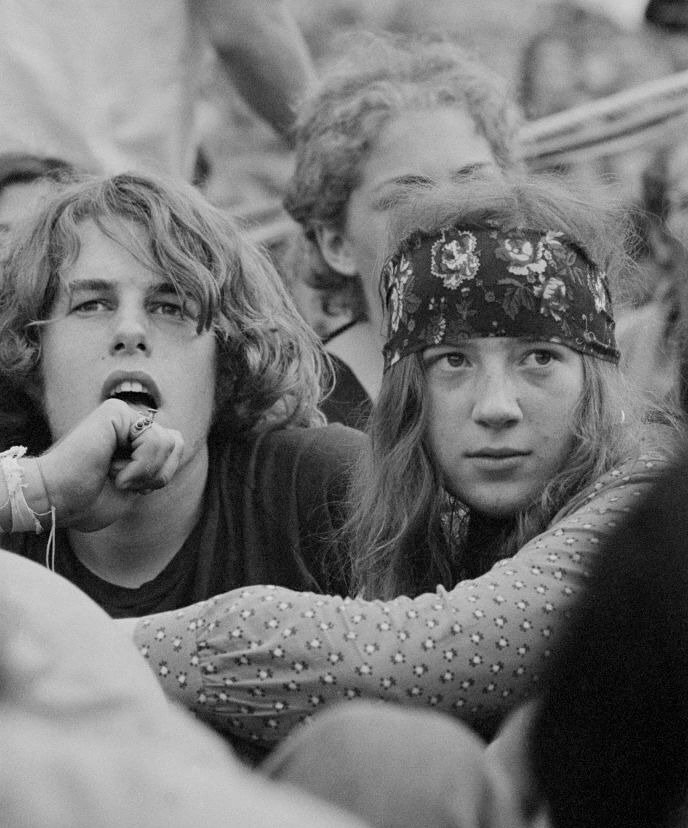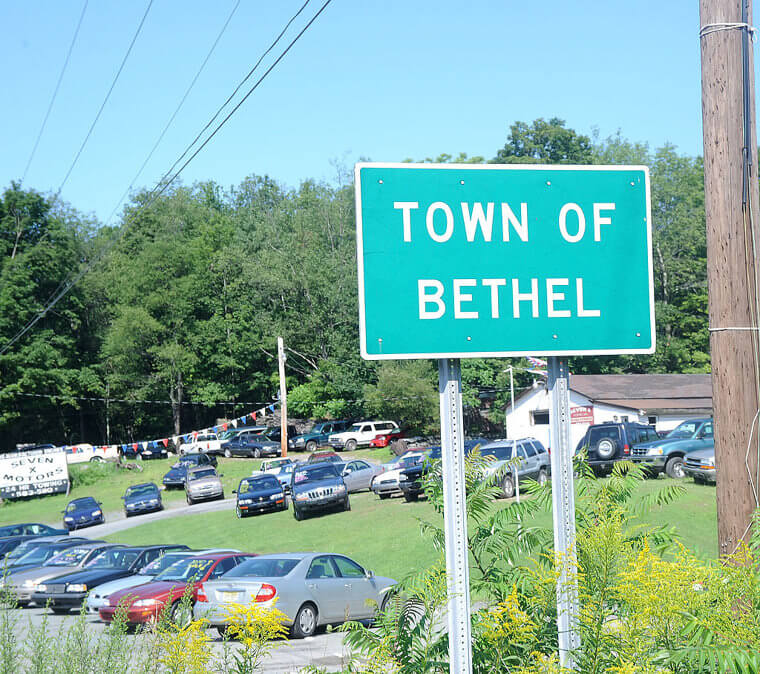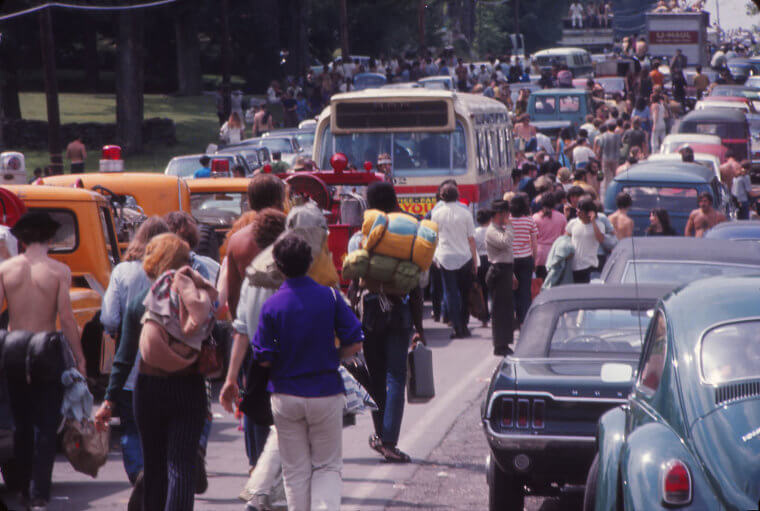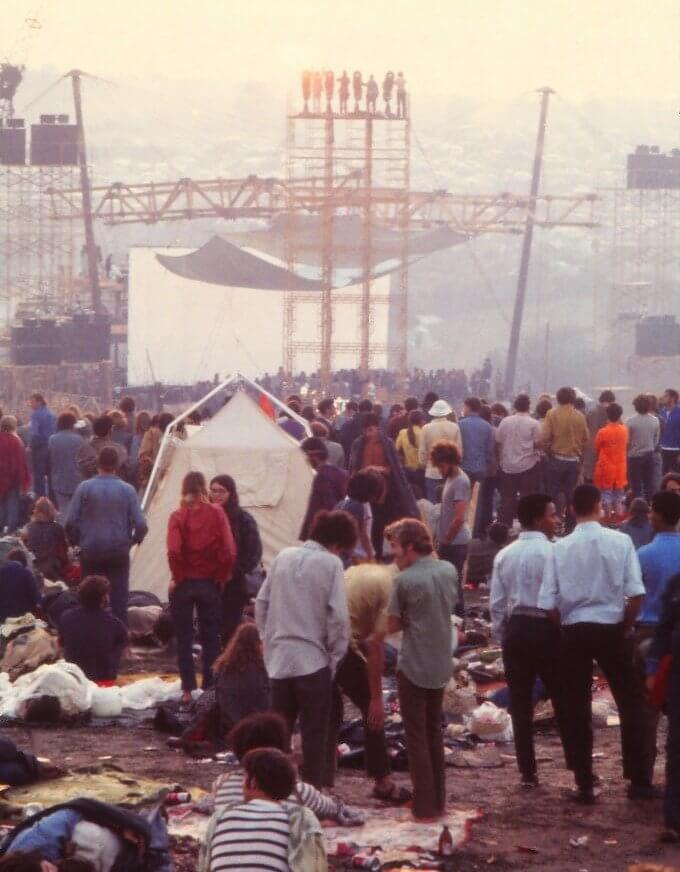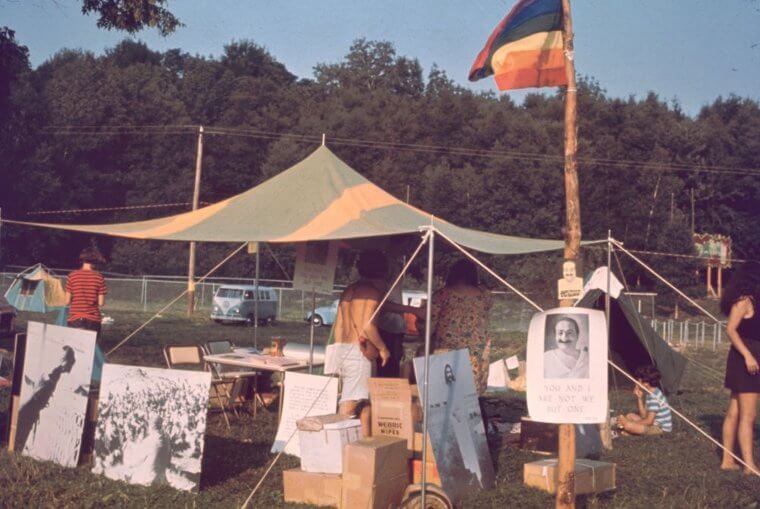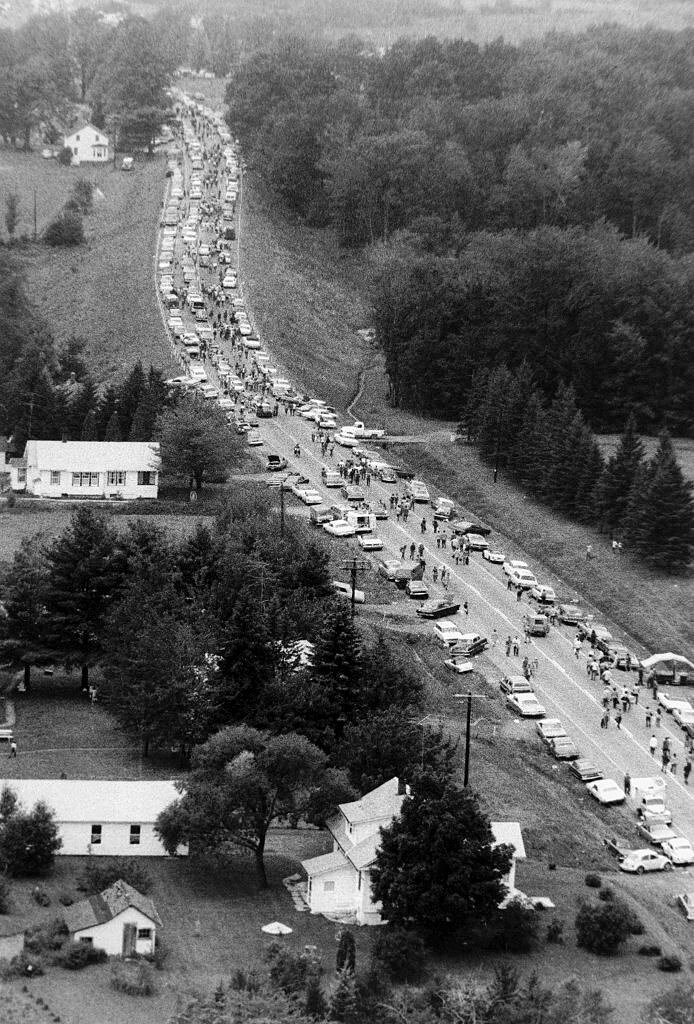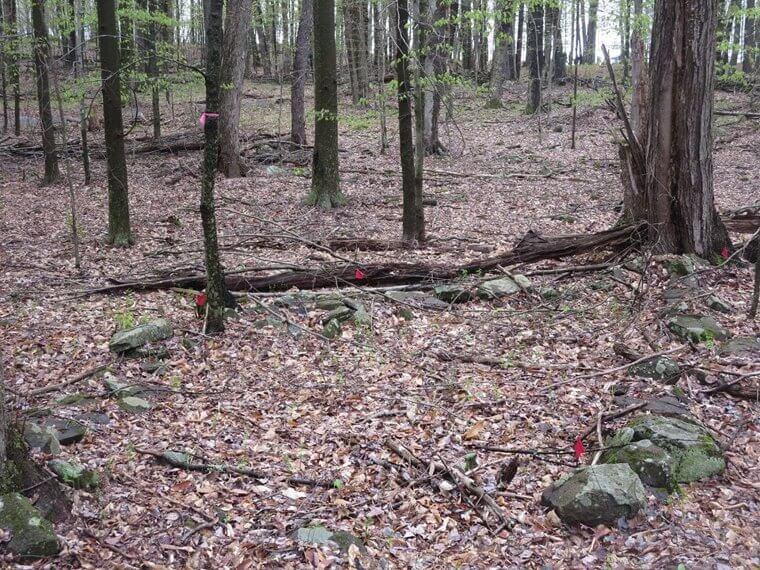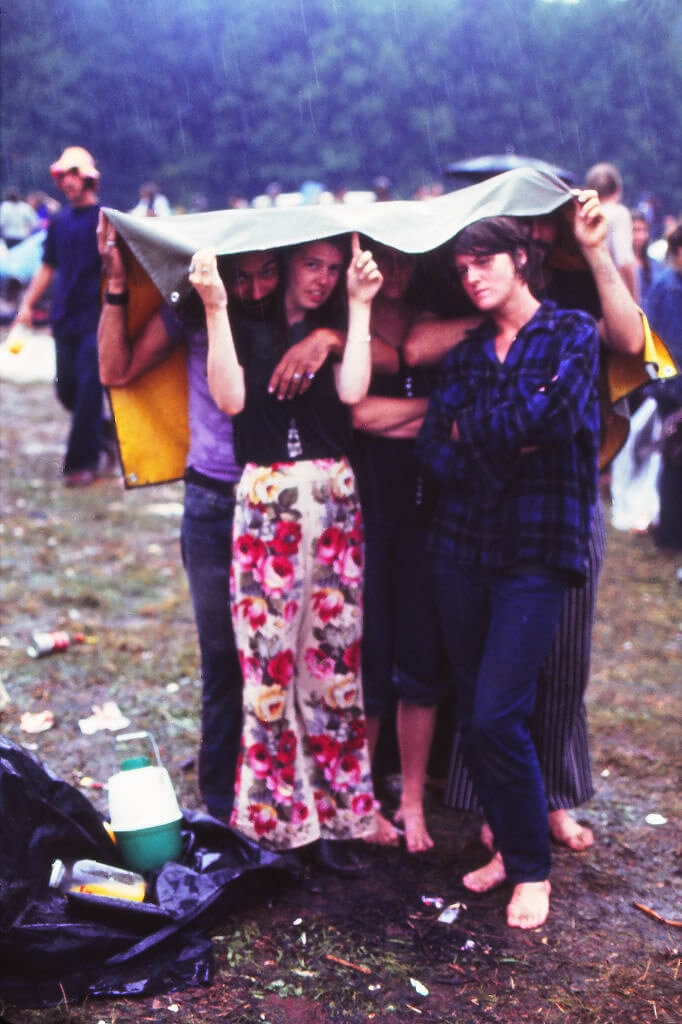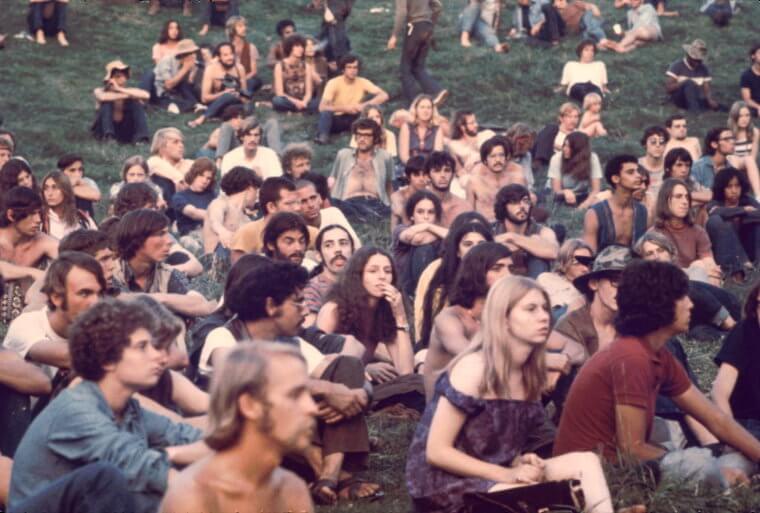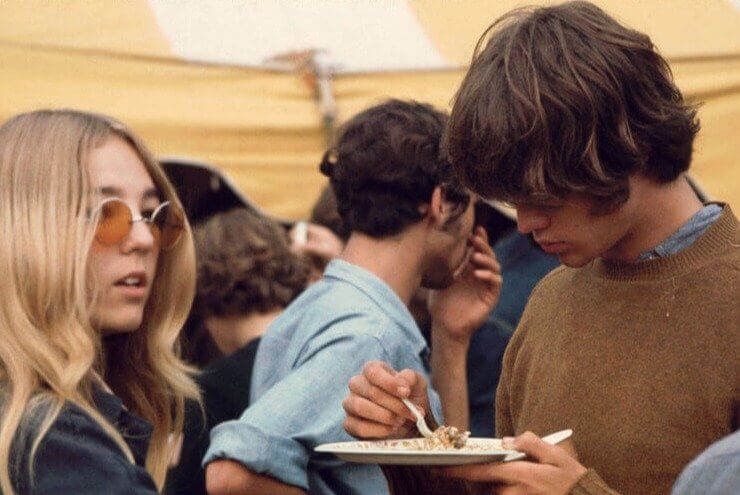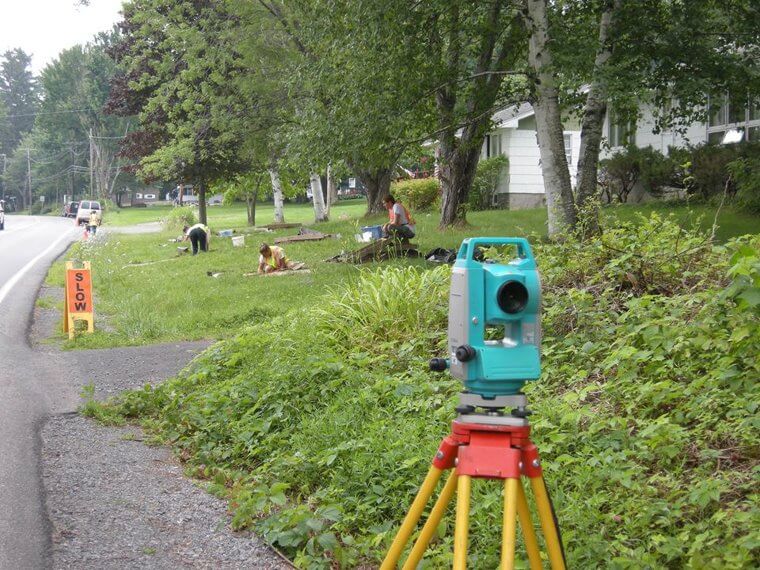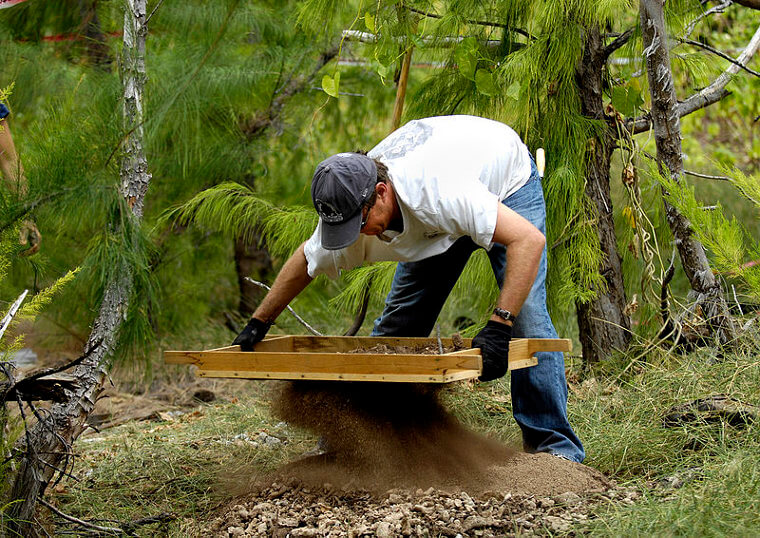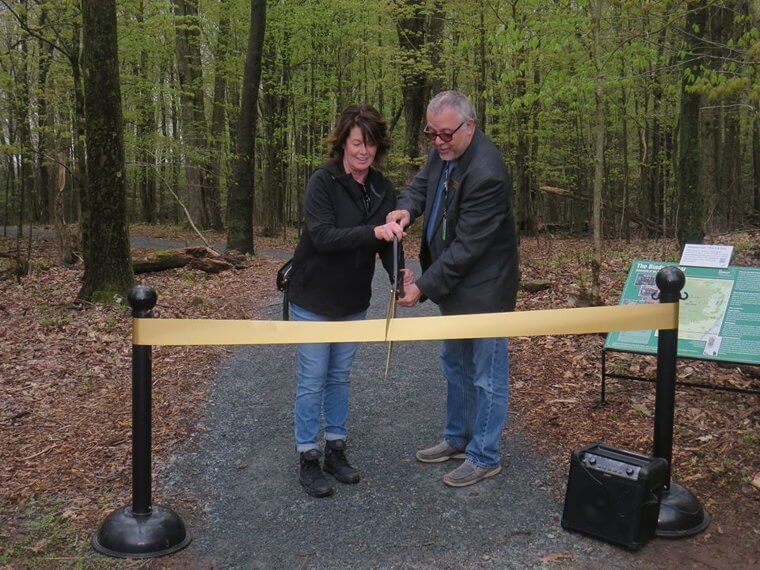America's Most Enduring Festival
The crowd attending Woodstock would eventually go on to be dwarfed by other festivals, but at the time that 400,000 people that descended on New York was marked one of the largest festivals in history. It also came at a critical juncture in American history. The Vietnam War was waging and the Civil Rights era was in full swing. It was a turbulent time, but it also placed Woodstock in a position to represent something much bigger than a simple festival.
It's because of this that archeologists continue to comb the field where the festival took place and create a definitive history of that three-day concert in upstate Bethel, New York.
Looking Back On Woodstock After Half A Century
There have been sporadic plans throughout the years to turn the field where Woodstock took place into a park or to build a monument of some kind to commemorate the festival. However, most of these plans have failed to come to fruition. And as parts of the field began being lost to nature, some started to worry that the festival's history would be lost forever. Some also worried that the recollections of the original festival goers were also being lost.
Jubilance and anarchy have long been associated with Woodstock but was the festival really as wild as many of the accounts have said? That's one of the things archeologists wanted to find out.
Researchers Find Proof Of Woodstock's Wild Side
There's a reason Woodstock is one of the most remembered festivals in music history; all researchers needed was definitive proof. Important historical events tend to have a way of inspiring legends and tales that aren't always backed up by facts. However, researchers ended up finding proof that the festival was probably exactly what people think when they think of Woodstock. They also find new details about how the festival came to be.
One might think that 400,000 people in a field with no authorities during the middle of the Counterculture Movement would be a recipe for disaster, but famously, that's not what happened in Bethel.
Woodstock Began As A Very Corporate Endeavor
What Woodstock started out as and what it came to be were two completely different things. The festival came to symbolize nearly everything the Counterculture Movement stood for, yet it actually started out as an idea hatched as a business plan. Those in the music industry got together with some businessmen and the two sides agreed to hold a concert in New York. However, they initially agreed that the concert was going to be held in a town called Wallkill.
The residents of the town opposed the plan though, so it had to be moved. It was probably for the best though, as the name Wallkill doesn't exactly evoke the same thing as Bethel.
Organizers Expected Much Less People
Nobody could've predicted the number of people that would show up for Woodstock, but official estimates ended up being way off. Scrambling for permits and a place to hold the festival, organizers landed upon a man named Max Yasgur's farmland only a month before the whole thing was supposed to happen. The property was around 600 acres. They also told the authorities that they only expected around 50,000 people to show up.
However, it's likely that they only did this in order to guarantee they'd get the permits they needed. Still, 50,000 people is still a lot of festival goers.
Organizers Scrambled To Finish Preparations
It's no secret that Woodstock was a bit chaotic, at least in part due to the failure of the organizers. They'd only managed to find a venue a month before the concert was supposed to take place. However, they didn't even have time to finish both the stage and the fencing in the area. They ended up selling 186,000 tickets before the festival took place and they expected to sell a lot more at the gates.
Word had gotten out about who the artists were, and it seemed like everybody was clamoring to attend. This spelled good news for ticket sales, but it would overwhelm those responsible for preparations.
A Famous Lack Of Security
Those involved in the Counterculture Movement weren't exactly known for their willingness to follow the rules, so what happened next shouldn't have been a surprise. Organizers, short on time and completely underestimating the number of people that would show up, failed to provide enough security for the festival. That, paired with the fact that they chose to finish the stage rather than the fencing, meant festival goers oftentimes just walked in, whether they had tickets or not.
Despite all of this, not having enough security didn't prove to be too much of an issue, and the festival may have been remembered differently had organizers provided a lot of armed security guards.
Festival Goers Overwhelmed Just About Everyone
As we've said, nobody expected the number of people that showed up for Woodstock. Lines were extraordinarily long, and the traffic ended up being backed up for 17 miles. They'd all come to see 30 of some of the era's best artists. Many other artists would end up getting their start just because they'd played at Woodstock. On top of all of this, rain meant that the field was soaked.
It all combined to make for three days of mud, music, and fun. Revelers made the most of the weather and images of festival goers rolling around in the mud are common.
The Mix Of Artists Made For Something Special
Some of music history's biggest names ended up playing at Woodstock. Those names included the likes of Janis Joplin, The Who, The Grateful Dead, and Jimi Hendrix just to name some. Every performance was worth seeing on its own, but when all of those big names play in one place, then it makes for a truly unforgettable experience. Hendrix would end up closing out Woodstock, and by that time people were probably aware the festival would go down in history.
Even today, it's unusual to see that many big names all performing at one venue, much less one that was basically thrown together in around a month or so.
Despite Being Mostly Peaceful, A Few People Did Die
Today, Woodstock is remembered as much for its relatively peaceful vibes as it is for its anarchy. However, there were still a couple of lives lost during the course of the three-day festival. Someone died during the festival after being run over by a tractor, and another died from what was probably an overdose. That said, the festival is also thought to be behind a whole lot of births.
According to Time Magazine, there were another 742 overdoses during the course of the festival, although most of them did not turn lethal. While that number is large, it's not altogether unsurprising.
The Festival Promoted Peace, Love, And Music
Today, Woodstock is mostly remembered for the values it espoused. However, at the time, people were a little divided about the festival. Most local living in Bethel definitely didn't like the fact that more than 400,000 people had descended on their small town. And nationally, some criticized all of the drugs and nudity going on at the festival. However, others saw it as a watershed moment for the Counterculture Movement.
They also pointed to the fact that the festival had been pretty peaceful despite the attendance of 400,000 "hippies" and minimum security. Later festivals would try and fail to capture the same essence of Woodstock that year.
People Can Now Visit The Site
While initial opinions were divided or critical when it came to locals' views on the festival, things have since changed. The site is now an official tourist attraction with its own monument. The farm is no longer owned by the original owner. It was bought by a billionaire named Alan Gerry. Today, the town of Bethel also hosts its own art festivals, probably owing in large part to the 1969 Woodstock festival.
Without the original festival, it's hard seeing so many music festivals taking place in the small town today or them receiving as many visitors and tourists looking to experience some of the magic of Woodstock.
Bethel's Modern Music And Arts Festivals
While initial local views of the festival were mostly critical, the town has come around to accepting its place in history. It opened a center for the arts in 2006 and then a museum not long after. The museum is dedicated both to the festival and the Counterculture Movement as a whole, which was probably something unthinkable when Woodstock was taking place in 1969. However, like it or not, the town is squarely in the history books.
Bethel also hosted another Woodstock in 2009, which saw a lot of the original artists come back and play in the same town that they'd played in 40 years before.
The 50th Anniversary Event
It's not easy to recreate the magic that was Woodstock. If you want proof of that then all you have to do is look at the planned 50th anniversary concert that was supposed to take place in 2019. It was a miracle the original Woodstock took place at all, so it really shouldn't be too surprising that the 50th-anniversary festival floundered. The planned celebration was supposed to include artists like Jay-Z, The Killers, and Miley Cryus,
For a little while, it looked like Woodstock 50 would be another event to remember, but it didn't take long for reality to set in and for things to go sideways.
The Festival Gets Canceled
Like its predecessor before it, Woodstock 50 ended up running into problem after problem. However, unlike the 1969 festival, those problems weren't able to be solved. Organizers announced that they would move the new festival to a different location and from that point forward it only seemed like a matter of time before the entire thing was canceled. And that's exactly what happened when an official press release went out in the summer of 2019.
The canceled festival was also involved in a couple of legal disputes with organizers blaming one another for sabotaging the entire thing. However, there were still celebrations to mark the 50th anniversary of Woodstock.
Renovation Of The Original Site Planned
While organizers were fighting amongst one another, the town of Bethel made plans to mark the 50th anniversary of Woodstock. Their plan involved building trails throughout the original property, with the town's museum and art center taking the lead. They planned to recreate some of the trails used by festival goers in 1969, while displaying information about the festival along the route. However, this proved to be a bit more difficult than first thought.
The sheer amount of chaos and people that attended the original festival made it difficult to figure out exactly where the original trails had been despite having photos from the festival.
Woodstock's Aerial Photos
When most people see photos of Woodstock, those photo usually focus on the concert goers themselves. However, there are also plenty of aerial photos that were taking over the course of the three day music festival. Unfortunately, these showed exactly what you might imagine: a large mess of people tightly packed together in the middle of a field. They proved to not be as helpful for reconstructing trails as some had hoped.
As you can see from this photo, it's hard to tell where the actual trails were due to them being hidden under all of the festival goers.
Turning To The Archeologists
The director of the Woodstock museum in Bethel, Wade Lawrence, told the Times-Herald Record that "We knew the trails existed” and that the team "were wading through waist-high ferns. Our feet kept banging into stacks of rocks." The former trail had been where the festival's vendors originally set up in the woods, which were unsurprisingly referred to as the Magic Forest. The trail itself was called the Bindy Bazaar Trail.
However, without definitive photos of the original trail, the team was forced to ask for help from a team of archeologists from Binghamton University, northwest of Bethel.
The Team Begins Excavations
It didn't take long for the team from Binghamton University to set up shop and begin digging. They quickly found things like broken glass from bottles and other small fragments of modernity you'd expect to find at a festival site. However, along with uncovering the original trails used by those at the concert, they also sought to uncover where the stage had been erected, something that wasn't yet known for sure.
This would prove a lot more difficult than most would think. However, the team would eventually make a breakthrough and find an important clue to solving the 50-year mystery.
The Importance Of The Stage
There was a reason that organizers were forced to choose between completing the fence or completing the stage, and not all of it had to do with a lack of preparation. The stage at Woodstock was actually quite large and measured around 60ft long by 45ft wide. It ended up hosting famous artists like Janis Joplin and Jimi Hendrix, so figuring out exactly where it was originally built was important.
In addition to the stage itself, there were also two massive towers that held huge speakers on either side of the stage, and one of those towers was around seven stories high.
A Lack Of Evidence
Despite its huge size, there were a couple of things working against the archeologists when it came to finding the site of the stage. Firstly, the stage wasn't built on a foundation like a slab. That meant that most of the evidence from its original construction was probably either removed completely or had rotted away. Secondly, there was another building placed in the vicinity of the original stage sometime in the 1990s.
This meant that even if the team did find evidence of a building, it might not be from the same stage where history occurred in the August of 1969.
The Team Makes A Breakthrough
Despite everything standing in their way, the team did eventually make a discovery. The archeologists found what appeared to be evidence of a fence post. They knew that the fence post had to be a part of the original fence built for the festival. Combining that new evidence with pictures of the site, they were able to determine that the post was a part of the fence that ran around the stage.
This would allow them to mark out where the fence was and, in turn, where the stage had originally sat. They'd just solved a lingering question some had been asking for decades.
Uncovering The Layers Of History
The team was also working on peeling back the years of deposition. They wanted to know what the ground level looked like back in 1969 when festivalgoers were trampling all over the field, wrestling in the mud, and listening to artists play. So, they pulled rings of soil and kept an eye out for signs that something unnatural had occurred. This would tell them more about what the field looked like all those years ago.
In turn, it would help inform those from the museum and art center about where exactly to reconstruct the trails so that they looked as similar as possible to the original trails on the site.
The Excavation Ends With Answers
Luckily, the team was able to shed a lot more light on what the original site would've looked like. In addition to placing the original stage, they were also able to uncover footpaths and a walking bridge that was used by the artists performing at Woodstock. All that was left was for stakeholders to begin constructing the trails. It wouldn't be long before people would be able to once again walk down the Bindy Bazaar.
Albeit, probably with a little less trouble than those who'd walked down the same path 50 years before, but no doubt with a little more reverence for what took place during the festival.
Shedding A Light On Music History
Organizers told the media that one of their main goals was to give people a chance to learn about and experience music history. One of the co-directors of the project, Josh Anderson, told Metro in 2018 that “People can stand on that and look up at the hill and say, ‘Oh, this is where the performers were. Jimi Hendrix stood here and played his guitar at 8:30 in the morning.’”
“This is a significant historic site in American culture, one of the few peaceful events that gets commemorated from the 1960s,” Lawrence, the museum director, told The Associated Press about the importance of preserving the site.
The Team Makes Another Discovery
It wasn't long after the excavation had finished place that the team from Binghamton University made a couple of other surprise announcements. After they were able to better study what they found, they would end up confirming a couple of long-held beliefs about the festival that'd never been proven outright. The team would return for the 50th anniversary to make their announcement, which would reveal more about Woodstock and music history as a whole.
Their findings had to do with the Bindy Bazaar, and exactly what took place at the booths of the Magic Forest over the course of the three-day concert.
What Exactly Was The Bindy Bazaar
As the wacky name implies, the Bindy Bazaar was just that. It was a place where vendors could set up and sell everything your 1969 Woodstock festival goer would need. It actually got its name from a store halfway around the world in the city of Mumbai, India. It was here where those at the festival would go and meet, trade, and walk through on their way to the camping areas.
As such, the area provided archeologists with a lot of clues about what daily life at the festival was really like for those who attended. The site had largely remained unchanged, as well.
The Bazaar Tells Us A Lot About Counterculture
Maria O'Donovan was the researcher in charge of excavations at the Bindy Bazaar. The Bindi Bazaar was a meeting place where transactions – which included trading and bartering in addition to selling – and cultural interactions took place,” she said in a press release, adding, "It exemplifies the informal, free-wheeling spirit of the counterculture.” However, there was much more than just selling and trading going on in the bazaar.
The bazaar had been set up in a prime location, which in turn meant that it provided a place for all kinds of different activities to take place.
The Bazaar Acted As A Hub
The bazaar itself was set up in what was probably the perfect location. It was in a part of the Magic Forest that sat right between two campgrounds. The trails that ran through it were probably far from uniform, but they meant that if you wanted to get to your campground, you were going to have to pass through the bazaar. There was also a very magical aspect to the area at night.
Concertgoers were guided through the chaotic paths of the festival at night by strings of fairy lights, which probably looked every bit as whimsical as you'd think back in 1969.
Learning More Details About The Bindy Bazaar
Unlike most of the land where Woodstock took place, the woods remained relatively untouched. This was great news for the team of archeologists. It meant that they might able to see signs of where the original vendors' booths were placed or how they were made. From there, they could get an idea of how the trails ran through the Magic Forest and where people were likely to gather and socialize.
Of course, nature had done her best to reclaim the forest floor, and the vegetation was all quite high when the researchers first began uncovering clues about the bazaar.
The Bazaar Didn't Go To Plan
Like everything else about Woodstock, it didn't take long for bazaar plans to go off course and morph into something else entirely. The festival organizers had planned for there to be around 25 booths in the Magic Forest. These would've been built with things like rocks and wood. The team would find evidence for a lot more structures than the original plans had called for, which isn't too unsurprising given the chaos of the festival.
And while the booths themselves didn't have foundations, researchers were aided by the fact that many vendors used rocks around their booths, which hadn't been moved since Woodstock place in 1969.
The Original Area For Booths Changed
When organizers were deciding where the bazaar would be, they'd mapped out the exact location. However, for whatever reason, archeologists found that vendors had their own ideas about where to set up shop. “In the Bindy Bazaar area, we were able to locate traces of the individual vendor’s booths. [They] consisted of lines of rock that formed the base for relatively ephemeral booths of wood, tarps, and so on,” O'Donovan said in a 2019 interview.
The traces of booths told researchers that, like other aspects of the festival, the bazaar had just sort of organically taken on a life of its own and became something organizers didn't plan for.
Organizers Couldn't Control It
“Archaeologists located 24 potential vendor booths concentrated on one side of the Bindy Bazaar area and not distributed as on the 1969 plans. This is more evidence that the festival took on a life of its own that organizers could not control,” O'Donovan said about the findings in a university press release. “Our research demonstrated that the reality of what occurred at Woodstock was not captured by the preliminary plans,”
In addition to things not being set up as planned, the researchers also found evidence of more structures than what was originally sanctioned by organizers. However, one can only guess as to how organizers tried to deal with them or if they cared at all.
Researchers Find 13 More Building Sites
When the researchers released their findings, they labeled the 13 additional sites they found close to the bazaar as points of interest. However, it's pretty likely these were just other vendor stalls that'd been set up, in addition to the sanctioned stalls in the bazaar. The researchers said that while they couldn't confirm these were actually stalls they were still culturally important places that'd been set up for some reason.
There was also another pretty surprising discovery or lack thereof, that researchers made during their time digging on the festival site. And this one had to do with Woodstock's historic — or notorious — reputation.
Evidence Of Drug Use On The Site
There are usually a couple of things that most people think of when they think of Woodstock. Along with peace, love, and harmony, most also usually think of drug use. However, researchers said that they actually didn't find much evidence of this while they were digging. “This may seem a bit counter-intuitive given the reputation of Woodstock, but we found very little evidence of drug-related paraphernalia,” O'Donovan said in an interview with Gizmodo.
However, she didn't go as far as to say that the tales of drug use at the festival were wrong, and she offered a brief explanation as to why they probably didn't find any paraphernalia.
It May Have Been The Research Methods
A very simple explanation for why researchers didn't find much in the way of paraphernalia might be that they simply didn't dig deep enough. She said that the main technique they used didn't call for a whole lot of digging, meaning that there are likely still plenty of artifacts at the site that've never been disturbed. So, the tales of historic debauchery and drug use at the festival weren't proven entirely wrong.
And then there are the official medical records from the area and all of the incidents of overdoses taking place at the festival. Some drug paraphernalia may have also simply disintegrated over the years.
Contemporary Archeology As An Emerging Field
When most people think about archeology, they probably usually think about researchers digging up the Earth to learn about events that happened hundreds, thousands, or even millions of years ago, not a couple of decades ago. However, according to O'Donovan, contemporary archeology is an emerging field that has gained prominence in recent years." Archaeologists study the past through the material things that people leave behind — things they lose or throw out,” she said.
In truth, there are things that only happened a couple of decades ago that could tell us more about our present and some of the things historians might've missed.
Contemporary Archeology's Place In Today's World
O'Donovan went on to explain why this field of archeology is so important, especially in helping us make sense of the time we live in now. “Our methods are just as applicable to material discarded 10 years ago as thousands of years ago, and our interpretations [are] just as applicable to contemporary issues, such as migration and refugees, human impacts on the environment, how we use urban spaces and so on,” she said.
Historians and the media often don't cover aspects of daily life that might seem mundane or boring, but that can still tell us a lot about human interactions and history, she went on to say.
Woodstock Was A Truly Magical Place In Time
In 2019, after 50 years, officials opened the trails at Woodstock so that visitors could experience a piece of not only music history but of American history. “[It] was a whimsical place where all manner of vendors and other attendees bartered for goods, met up with lost friends, made new friends and attempted to stay out of the rain," assistant curator of Bethel's museum, Julia Fell said during the opening ceremony.
Those interested in the Counterculture Movement, or one of the many artists who famously played at the festival, can walk down the very same trails that festivalgoers did all of those years ago.
